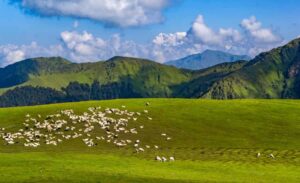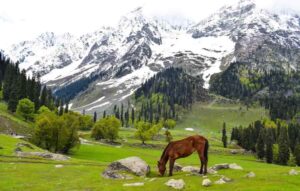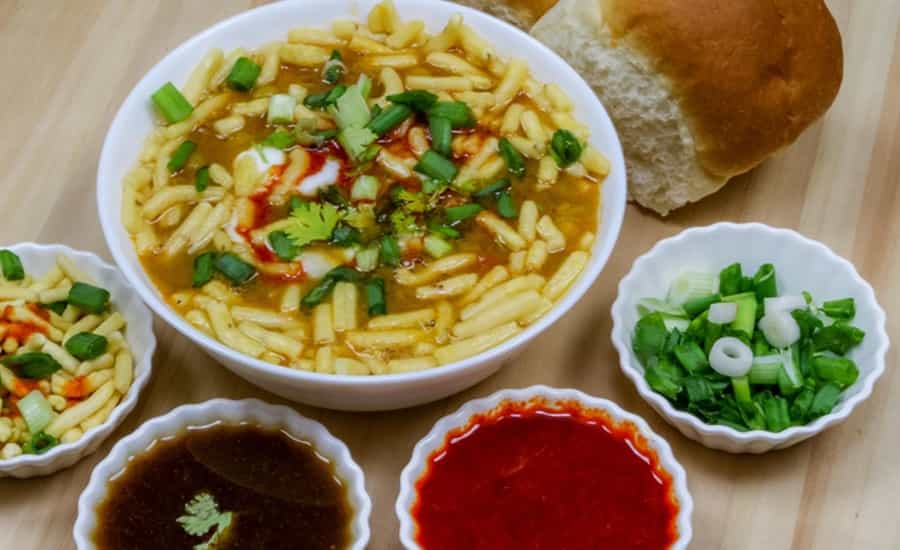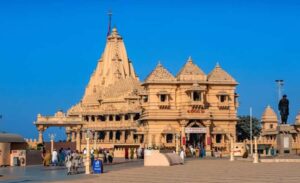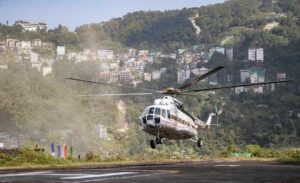The Grandeur of Brihadeeswarar Temple in Thanjavur
- Situation: Thanjavur in Tamil Nadu
- Constructed by: Rajaraja Chola of eleventh century
- Chief Deity: Rajarajeswaram Udaiyar, Lord Shiva- Peruvudaiyar
- Festivals of Great Significance: In the month of Visaka that falls in May or June, there is a festival celebrated annually for nine days.
- Entry Fee: No entry fee
The artistic talent of the Chola rulers was at display through the medium of the Thanjavur’s temple of Brihadeeswara. This temple was a place with great significance in Architecture; it was constructed in the 11th century. The temple is under the consideration of the tallest temples of the world. The design of the temple is designed in such a manner that in any time in the year, there is no casting of shadow on the temple.

Know more about the Temple
The temple of Brihadeeswara got its origin in the 11th century; this was the period of the reign of the Chola rulers who had a wide spread peninsular in India. Unlike other rulers from the Chola Empire, Rajaraja Chola was too fond of architecture and art. During the reign of the Chola rulers most of the temples with stunning architecture and also sculptures with bronze were fashioned in South India. The views of the temples or the sculptures are the same till today.
Style of the Temple
The main architect, Sama Varma that belonged to the court of Chola was told by Rajaraja to construct the God’s House. Under the order of the king the architect began with his work with true dedication. He began his design that stood on a square base of 29 metres and had the height of 65 metres. All the temples that were constructed during the reign of Chola were all fully carved and so was the temple of Brihadeeswara. As a part of contribution to the temple of Thanjavur, there are a hundred and seven paragraph letterings on the fortifications of Vimanam. The situation of the temple is in the interior of the fort, later in the 16th century there was addition in the temple of whose walls. The Vimanam is of the height of 200 feet, this is also called as ‘Dakshina Meru’.
The weight of the octagonal Shikharam is 81 tons which is rested on the granite’s single block, from the beliefs it is known that from the distance of six kilometers it was carried on specially constructed ramp. Massive Nandis mark the turning point of the Shikharam (also known as Shikhara), & the Kalasam on pinnacle is 3.8 m in height. Hundreds of beautified figures festoon the Vimanam, even though it is probable that, during the period of the Maratha’a some of these had an existence.
The Shivalingam that is Peruvudaiyar, Rajarajeswaramudaiya – is a gigantic one, located in a 2 storeyed chamber, & the walls adjoining the chamber glee visitors as a lumber room of sculpture and murals. The Sri Brihadeeswara’s Shivalinga is possibly the most fantastic in survival. This figure was initially known as “Adavallan” (the one who is good in Dance). The other name was Dakshina-Meru Vitanken. The image is known as Rajarajeswaramudaiya, – The Lord of Rajarajeswaram by Rajaraja Cholan. The elongated Prakaram environs the enormous temple which is 500 feet by 250 feet, and the fortifications neighboring the Prakaram goes back to the era of Rajaraja Cholan. The walls abodes extended pillared passageways, which thrive in murals, Nandis and Shiva Lingams. In addition to the era of Pandyas can be seen in the temple of Periya.
Striking Art of Sculptures
Happenings as of the Nayanmars lives, quite a few of the one hundred and eight postures of Bharatanatyam dance, materializations of Shiva (Dakshinamurthy, Nataraja, Tripurantaka, Adalvallan, etc.) are impersonated in sculpturesque empanels or in wonderful Chola murals. Both the exterior and the interior fortifications of the holy place are stuffed with similes described over.
The Mukhamandapam, the Sanctum, the Ardhamandapam and the Mahamandapam, even though distinct, as of a amalgamated unit with a striking appearance which attracts visitors, forcing you to be in awe of such enduring architectural accomplishment performed about thousands of years before. Entranceways to the Mandapams & the loomed entranceways to the Prakarams are grandiose. The stateliness of the style and the sculptural elegance speaks more on the skills of Cholas. Dating back as the era of the Nayak is domiciled in its Mandapam that goes with the opulence of the holy place of worship. This monolithic Nandi is of twenty five tonnes in weight, twelve feet in height and twenty feet long.
Temple Timings
- The temple usually opens at around 6:00 AM in the morning.
- The afternoon break or “Uchikalam” takes place from about 12:00 PM to 4:00 PM.
- The temple reopens in the evening at approximately 4:00 PM.
- The evening puja or “Sayarakshai” is performed around 6:00 PM.
- The temple closes for the day after the evening puja.
Rituals
- Abhishekam: Devotees can witness the sacred bathing ceremony or abhishekam of the main deity, Lord Shiva, performed with various holy substances such as milk, ghee, and sandalwood paste.
- Pooja Services: The temple conducts multiple daily pooja services, including the morning and evening pujas, where priests offer prayers, hymns, and offerings to the deity.
- Archanas: Devotees can participate in archana services, where the 108 names of Lord Shiva are chanted.
- Aarti: The lighting of lamps and the performance of aarti are significant rituals, creating a spiritually charged atmosphere.
- Processions: On special occasions and festivals, the temple holds grand processions of the deity within the temple complex, adding to the festive spirit.
- Cultural Performances: The temple occasionally hosts cultural events and performances, showcasing the traditional art and music of the region, enhancing the cultural experience for visitors.
Festivals for Celebration
Festivals brings light to the temples, on each and every month when the ruling star Shatabhisha is addressed as a festival as this is the time of the birth of Rajaraja. Another festival is in the Kartik month and is called as the Kartik day.
There is also a festival that is conducted annually for nine days in the month of Visaka that comes in May or June, at this time there is an enactment drama of Raja Rajeswara. On this auspicious occasion there is a bath given to the deity with aromatic water and in this water the big Champaka flower buds are soaked. For burning lamps ghee is used in place of oil, on the days of the festival. Additionally the items used include cake prepared with rice, dal, pepper, vegetables dishes, juice, mustard and pepper, tamarind, ghee and curd.
Accommodation in Thanjavur
Thanjavur, a city steeped in history and culture, offers a range of accommodation options for travelers. Visitors can find a variety of hotels, guesthouses, and resorts to suit various budgets and preferences. Some popular choices include heritage hotels that provide a glimpse into the city’s rich past. It’s advisable to book your stay in advance, especially during the tourist season, to ensure a comfortable visit to this historic city.
Weather of Thanjavur
Thanjavur experiences a tropical climate typical of South India. Summers, from March to June, are hot and humid with temperatures often exceeding 40°C (104°F). Monsoons arrive from July to October, bringing heavy rainfall. The best time to visit is during the winter months, from November to February when the weather is more pleasant, with temperatures averaging around 25-30°C (77-86°F), making it conducive for exploring the city and its cultural treasures.
Best Time to Visit Thanjavur
The ideal time to explore Thanjavur is during the winter season, from November to February. The pleasant weather during this period allows you to fully appreciate the city’s historical and cultural significance without being hampered by extreme heat or monsoon rains. This is also the time when various cultural festivals and events take place, adding to the vibrancy of the city.
How to Reach Thanjavur
Thanjavur is well-connected by various modes of transportation. The nearest airport is Tiruchirapalli International Airport (Trichy Airport), approximately 60 kilometers away from Thanjavur. From the airport, you can hire a taxi or use public transportation to reach the city. Thanjavur also has its own railway station, which is well-connected to major cities in Tamil Nadu and other parts of India. If you prefer road travel, Thanjavur is easily accessible via the National Highway 67, which connects it to neighboring cities. The city is around 350 kilometers southwest of Chennai, making it roughly a 6-hour drive from the state capital. Buses and taxis are readily available for the journey, providing convenient options for reaching this culturally rich destination.
- Also Read: Sheetla Mata Mandir Gurgaon




